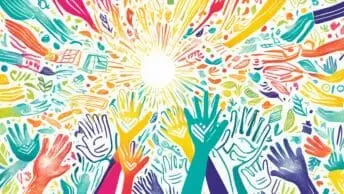The world we live in is becoming increasingly digital, and technology has permeated almost every aspect of our lives. One field that has experienced a significant shift due to technological advancements is mental health care. With an ever-growing awareness of mental health issues and the increasing demand for accessible and effective care, technology has been a game-changer in providing support for those in need. In this blog, we’ll explore the intersection of mental health and technology, delving into the various digital tools that play a vital role in promoting well-being and mental health care.
The Rise of Digital Mental Health Tools
Over the past few years, there has been a surge in the development of digital mental health tools. These tools range from mobile apps, online platforms, and teletherapy services to wearable devices that monitor physiological markers of mental health. These innovations have made mental health care more accessible, affordable, and personalised for millions of individuals worldwide. Let’s take a closer look at some of these tools and their benefits.
Mental Health Apps
Smartphones have become an integral part of our daily lives, and the app market has expanded to accommodate mental health services. Apps such as Headspace, Calm, and Moodpath offer guided meditations, stress management techniques, and mood tracking features to help users develop healthy coping strategies and stay in tune with their emotional well-being. These apps serve as a convenient, private, and affordable way for individuals to access mental health support at their fingertips.
Online Therapy Platforms
Online therapy platforms, like BetterHelp and Talkspace, have made therapy more accessible to those who might not have been able to access it before. These platforms allow users to connect with licensed therapists via text, audio, or video calls, making therapy more convenient and flexible for people with busy schedules or those living in remote areas. Online therapy also helps to reduce the stigma associated with seeking mental health care, as it offers a higher level of privacy and anonymity.
Wearable Technology
Wearable devices, such as smartwatches and fitness trackers, have become increasingly popular for monitoring physical health. In recent years, these devices have begun incorporating features that also track mental health indicators. Some wearables can monitor stress levels, sleep patterns, and heart rate variability, providing valuable insights into one’s emotional well-being. This data can be used to create personalised interventions and strategies for managing stress and improving mental health.
Virtual Reality (VR) and Augmented Reality (AR) Therapy
Virtual reality and augmented reality have made their way into the field of mental health care, offering immersive experiences for therapy and treatment. For example, VR exposure therapy is used to treat phobias and anxiety disorders by gradually exposing individuals to the source of their fear in a controlled, virtual environment. This method has proven to be effective in reducing symptoms and promoting long-term recovery.
The Future of Mental Health and Technology
As technology continues to evolve, so does the potential for innovative digital tools that support mental health care. Artificial intelligence (AI) and machine learning are already being used to develop advanced algorithms that can identify patterns in data and predict the onset of mental health issues. Furthermore, as telemedicine becomes more widespread, we can expect to see increased collaboration between mental health professionals and digital tools, leading to more personalised, effective treatments.
Conclusion
The intersection of mental health and technology has transformed the way we approach well-being and mental health care. Digital tools have made mental health resources more accessible and affordable, breaking down barriers and empowering individuals to take control of their mental health journey. As technology continues to advance, we can expect to see even more innovative solutions for supporting mental health and fostering a future where mental well-being is a priority for all.






